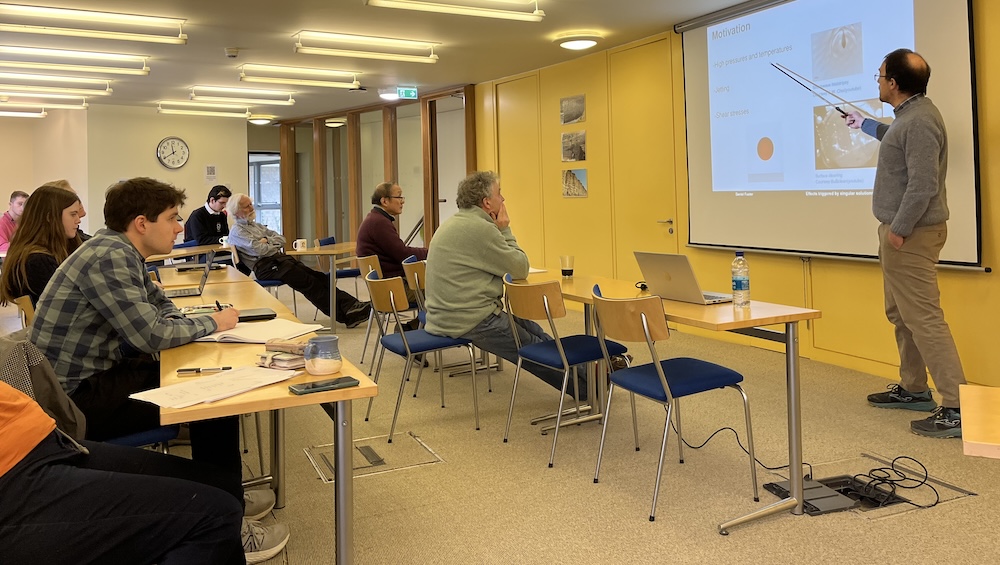Professor Daniel Fuster is the CNRS Research Director at the Institut d’Alembert, and works at Sorbonne University in Paris. He visited us today, and presented his recent work on the collapse of non-spherical bubbles.
Professor Fuster’s work was motivated by some interesting laboratory observations. In the experiments, a pulse of laser energy is used to create a small bubble in a body of static fluid. Initially, the pressure inside the bubble is higher than the surrounding ambient pressure, and so the bubble expands. As a result of the expansion, the pressure inside the bubble drops, until it equals the surrounding ambient fluid pressure. At this point, inertia forces drive the bubble to expand further, but the pressure inside the bubble is now lower than the ambient pressure. Eventually, the internal pressure drops so much that the bubble collapses.
Professor Fuster showed that while collapsing, the bubble develops a non-spherical geometry, associated with the Rayleigh-Taylor instability at the bubble-liquid interface, as well as the formation of liquid jets. In one of his experiments, the jet fluid was dyed: a slow-motion video recording of the dyed fluid propagating upwards through the experimental tank can be seen on the professor’s webpage here.
